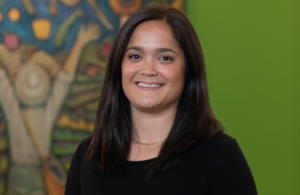Early in Jaynee Day’s career as President and CEO of Second Harvest Food Bank of Middle Tennessee, a local grocer moved away, wiping out millions of pounds of donated food, plus a tidy income the food bank had generated by handling the grocer’s reclamation needs. Day wound up turning the loss into a multi-million-dollar social enterprise business, a lasting legacy of her 30-year career as she prepares for her retirement at the end of June.
Project Preserve, which serves more than 100 regular food bank clients across the country, started out simply as a way for Second Harvest to decrease its reliance on donated food, especially as the grocery industry underwent consolidation and other donation-threatening trends. As the food bank got good at purchasing food directly from local manufacturers at cost or below, other food banks wanted in. Over the years, Second Harvest’s Project Preserve has served nearly 180 food banks, charging them a small mark-up on food it now sources from dozens of manufacturers across the country.
That’s only half the story. Phase two of Project Preserve kicked in when Second Harvest moved into a new building in the fall of 2002 and added a USDA-approved cook-chill facility, which lets it transform food donated in bulk into shelf-stable products that soup kitchens and other agencies can use to prepare food. Hot entrees like chicken and dumplings are prepared in the facility, pumped into heat-sealed bags and then cooled immediately, preserving freshness for up to two years. The facility also produces pre-made meals in trays that can be delivered directly to clients.
Built at a cost of $1.6 million and requiring additional investments of about $1 million over the years, the food bank industry’s sole cook-chill manufacturing facility represents a fair amount of risk. Day acknowledged some sleepless nights while building the business, but also confidence in her plan. “Some people call me a risk taker, but it’s calculated risk. I’m very thoughtful about it,” she said.
Day credited her board and its deep knowledge of food manufacturing and food science for helping to develop a thorough business plan. One aspect included creating a market for the cook-chill products. The food bank took advantage of a nearby cook-chill facility connected with a board member to purchase cook-chill products at cost and send them out to the agencies before rolling out its own products. Over 18 months, the food bank got the agencies familiar with the idea of cook-chill. “We had to create the market,” Day noted.

In addition to the financial return on its investment, which was achieved after a few years, the food bank is benefitting from improved food safety through cook-chill, while also offering agencies a streamlined method of preparing hundreds of meals at once, all hand-crafted to be more nutritious. In recent years, Project Preserve has enabled Second Harvest to accept weekly donations of thousands of pounds of tomatoes that would otherwise be thrown away, and turn them into attractive pouches of tomato sauce now used by agencies. Finally, the facility provides gainful employment, engaging three paid staffers, as well as women transitioning out of prison who work for eight weeks at a time.
The direct-from-manufacturers purchasing side of Project Preserve required a smaller investment (of about $25,000 to $30,000) to allow the food bank to ship products before receiving payment, and was paid off within six months to a year, Day said. She credits great relationships with manufacturers for the ability to offer low prices, even for clients as far away as in Alaska and Hawaii. “When they hear we’re a non-profit working with other non-profits, they love that idea and want to offer you a great price,” Day said of the manufacturers. Another feature of Project Preserve is its ability to offer mixed loads of food, rather than bulk donations of single items.
Day, who is planning trips to Greece this summer and Antarctica in January, need not worry anymore about consolidation in the grocery industry. Thanks to her vision and ambition, Second Harvest is well-prepared to overcome any disruptions in donated product. Plus it has a sizable cushion afforded by the success of Project Preserve, which earned a profit of more than $1.9 million on revenues of nearly $37.5 million last year. “All of that just goes back into feeding hungry people,” Day said.
Photo credit: Ashley Hylbert at ashleyhylbert.com.









